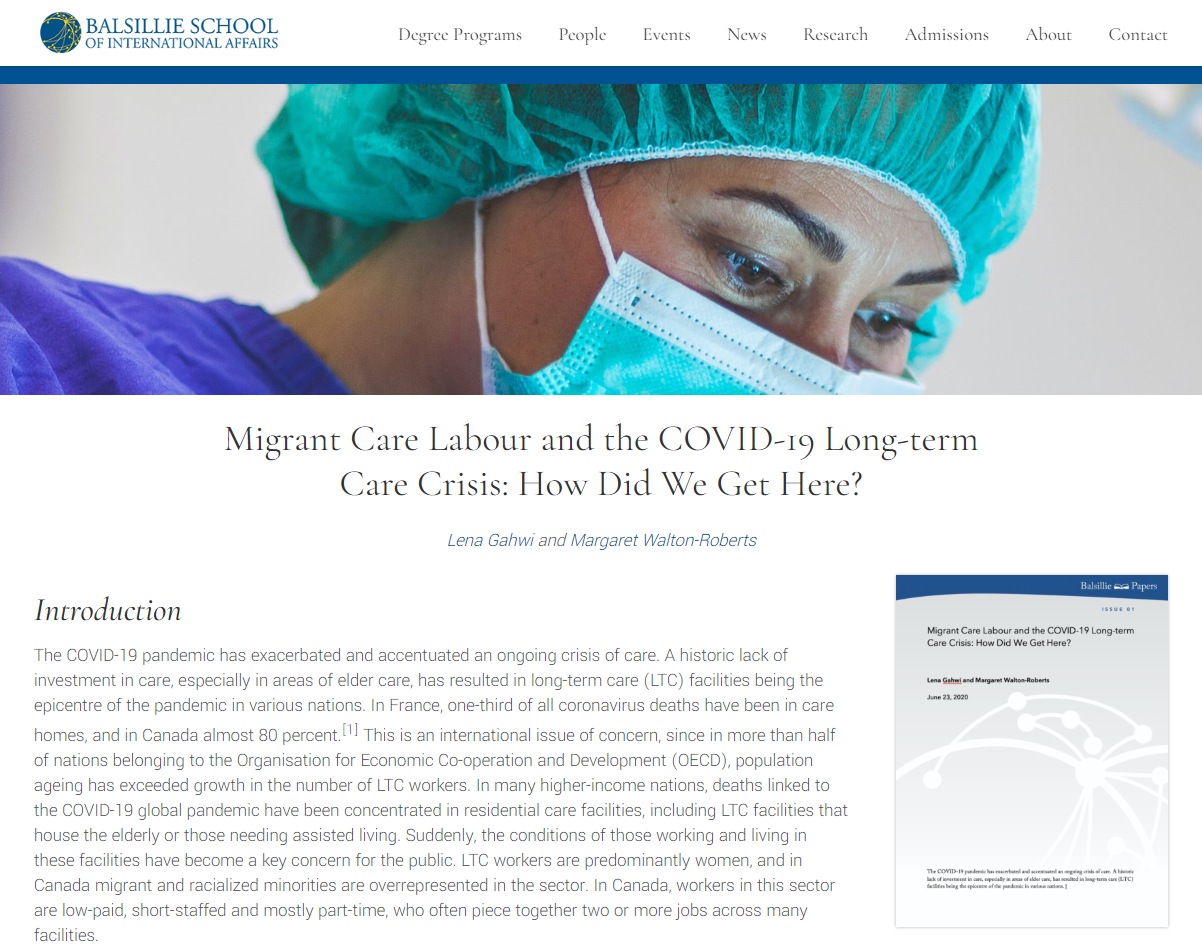The COVID-19 pandemic has exacerbated and accentuated an ongoing crisis of care. A historic lack of investment in care, especially in areas of elder care, has resulted in long-term care (LTC) facilities being the epicentre of the pandemic in various nations. In France, one-third of all coronavirus deaths have been in care homes, and in Canada almost 80 percent.[1] This is an international issue of concern, since in more than half of nations belonging to the Organisation for Economic Co-operation and Development (OECD), population ageing has exceeded growth in the number of LTC workers. In many higher-income nations, deaths linked to the COVID-19 global pandemic have been concentrated in residential care facilities, including LTC facilities that house the elderly or those needing assisted living. Suddenly, the conditions of those working and living in these facilities have become a key concern for the public. LTC workers are predominantly women, and in Canada migrant and racialized minorities are overrepresented in the sector. In Canada, workers in this sector are low-paid, short-staffed and mostly part-time, who often piece together two or more jobs across many facilities.
Gahwi, Lena, and Margaret Walton-Roberts. “Migrant Care Labour and the COVID-19 Long-Term Care Crisis: How Did We Get Here?” Balsillie School of International Affairs, Balsillie Papers, 23 June 2020.






